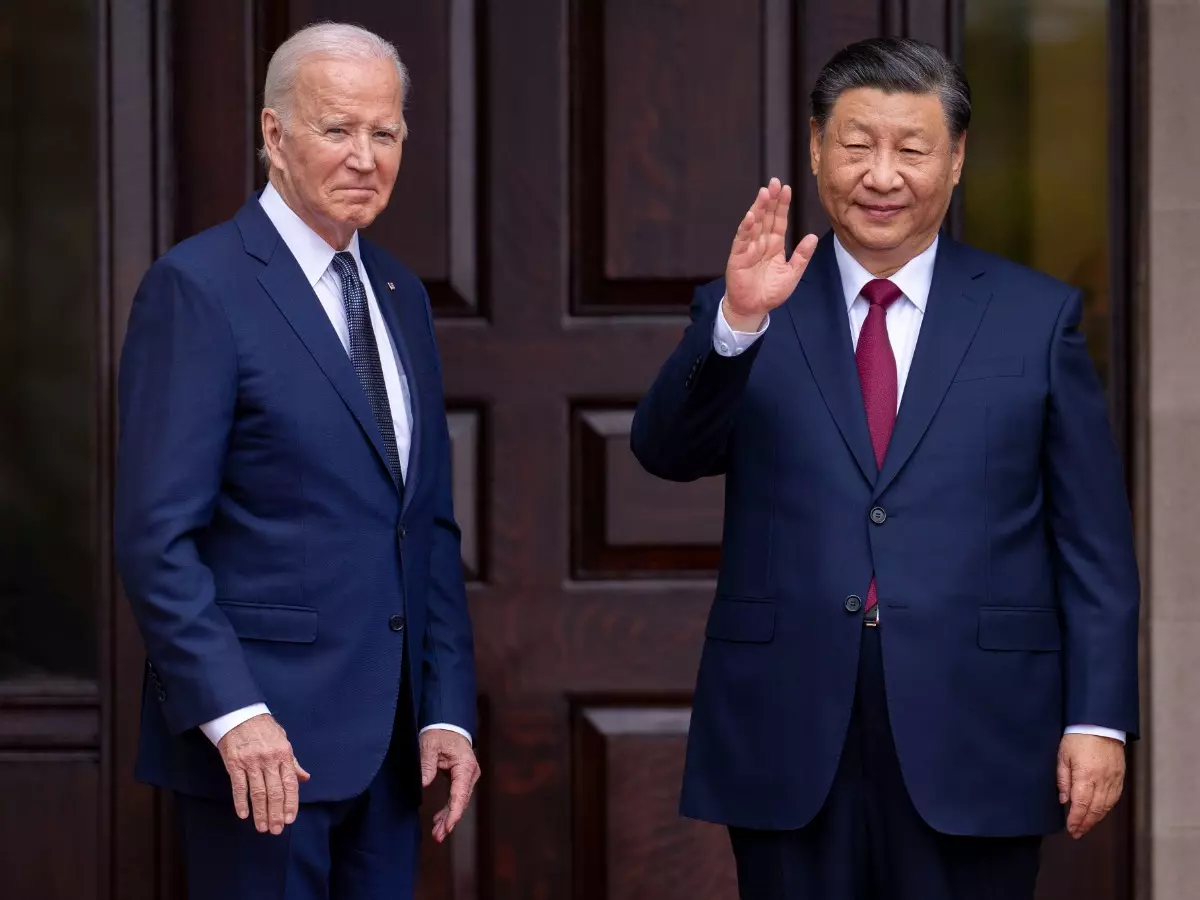Biden-Xi Meeting And A New Grammar Of Great Power Relationship
President Joe Biden and President Xi Jinping met for the first time in about a year on the sidelines of the Asia-Pacific Economic Cooperation (APEC) conference in California. Pulling off the meeting took months of spadework and that it took place, at all, seemed the parameter of success from both ends.

President Joe Biden and President Xi Jinping met for the first time in about a year on the sidelines of the Asia-Pacific Economic Cooperation (APEC) conference in California. Pulling off the meeting took months of spadework and that it took place, at all, seemed the parameter of success from both ends. With geopolitical upheavals across the world, as well as bilateral jostling over national security and trade transactions, the U.S.-China relationship has hit new lows in recent times.
The downward spiralling relationship between the great powers has become the single most important reference point in international affairs. Countries, irrespective of their political dispensations and geographical positions have been reorienting their national strategies in response to how the U.S.-China bilateral dynamics pans out.
 AP
AP
India, owing to its own adversarial relationship with China and a growing strategic convergence with the United States has been keenly watching the developments leading to the consequential Biden-Xi meeting and its outcome.
Are Washington and Beijing Re-coupling?
Counteracting China¡¯s rise in the Indo-Pacific is a matter of bi-partisan convergence in the United States, albeit partisan allegations and counter-allegations of who could do the job better. Despite intractable differences and constant geopolitical spats over areas that directly test the competitive drive and the conflict prone behaviour of great powers, attempts at lowering risks and preventing inadvertent incidents are also imperative. At the height of the Cold War tensions, the United States and the Soviet Union negotiated at the highest levels, to arrest the arms race and military developments from spiralling out of control, through agreements such as the Strategic Arms Limitation Talks (SALT). The U.S.-China competition is more comprehensive, with the two powers jostling for market space as not only the two largest economies of the world, but also the two most important trading partners.
The advent of new dual use technologies such as Artificial Intelligence (AI) opens a new Pandora box to balance national security and economic concerns. For instance, the investment and trading landscape in high-end technologies like semiconductors, is witnessing heightened competition, with global implications. Besides traditional power rivalry reminiscent of the Cold War era, the U.S.-China relationship is playing out in the midst of pressing issues such as climate change and global health that will require stitching together a global consensus unlike any experienced before. The U.S.-China Sunnylands Statement on Enhancing Cooperation to Address the Climate Crisis resolved, ¡°to operationalize the Working Group on Enhancing Climate Action in the 2020s, to engage in dialogue and cooperation to accelerate concrete climate actions in the 2020s.¡±
No Time to Fight
 AP
AP
As Biden¡¯s presidential term comes to close, and U.S. presidential election campaign heats up, both Republican and Democratic candidates will compete for the strong men and women title on China. High decibel rhetoric from both Washington and Beijing have been rampant, with diplomatic spats, like then Speaker of the U.S. House of Representatives, Nancy Pelosi¡¯s visit to Taiwan last year and the shooting down of an alleged Chinese spy balloon in U.S airspace earlier this year. Official comments from both ends have often accused each other of disturbing global peace and stability. However, President Xi while speaking to a room full of top American CEOs in American soil sang a different tune, full of metaphors.
¡°I have always had one question on my mind: How to steer the giant ship of China-U.S. relations clear of hidden rocks and shoals, navigate it through storms and waves without getting disoriented, losing speed or even having a collision?¡± he said. Asking if the United States and China were ¡°adversaries, or partners¡±, he called for each other¡¯s peace, stability and prosperity and in the same breathe accused Washington¡¯s anti-China posture for producing ¡°misinformed policy making, misguided actions, and unwanted results.¡± One of the most discernible outcomes of the Biden-Xi meeting was the mutual agreement to resume military-to-military communications, which Beijing had severed post Pelosi¡¯s eventful Taiwan visit.
 AP
AP
Does this indicate a sobering down of Xi¡¯s leadership and diplomatic style, otherwise identified as highly aggressive and uncompromising? Does this reflect the dismal projections of Chinese economy in the coming times? The United States, on the other hand, despite facing challenges to its global leadership, has been relatively successful in cementing a network of old allies and new partners, equally wary of China¡¯s rise. Bolstering new strategic cooperation with countries like India, building multilateral platforms like the Quadrilateral Dialogue, broadening the agenda of groupings like G7 and aligning with a reinvigorated G20 have enhanced Washington¡¯s great power playbook. Washington more than ever, understands this new logic of deterring China, through greater burden sharing and less patronizing attitude towards partners. But more than anything else, the Biden-Xi meeting is a moment of pause in global and regional geopolitics, as Washington and Beijing create the vowels and consonants in this new grammar of great power relationship.
*The Author is a New Delhi based Strategic Analyst and the Honorary Director of the Kalinga Institute of Indo-Pacific Studies. He is a regular commentator on International Affairs and Indian Foreign Policy.
